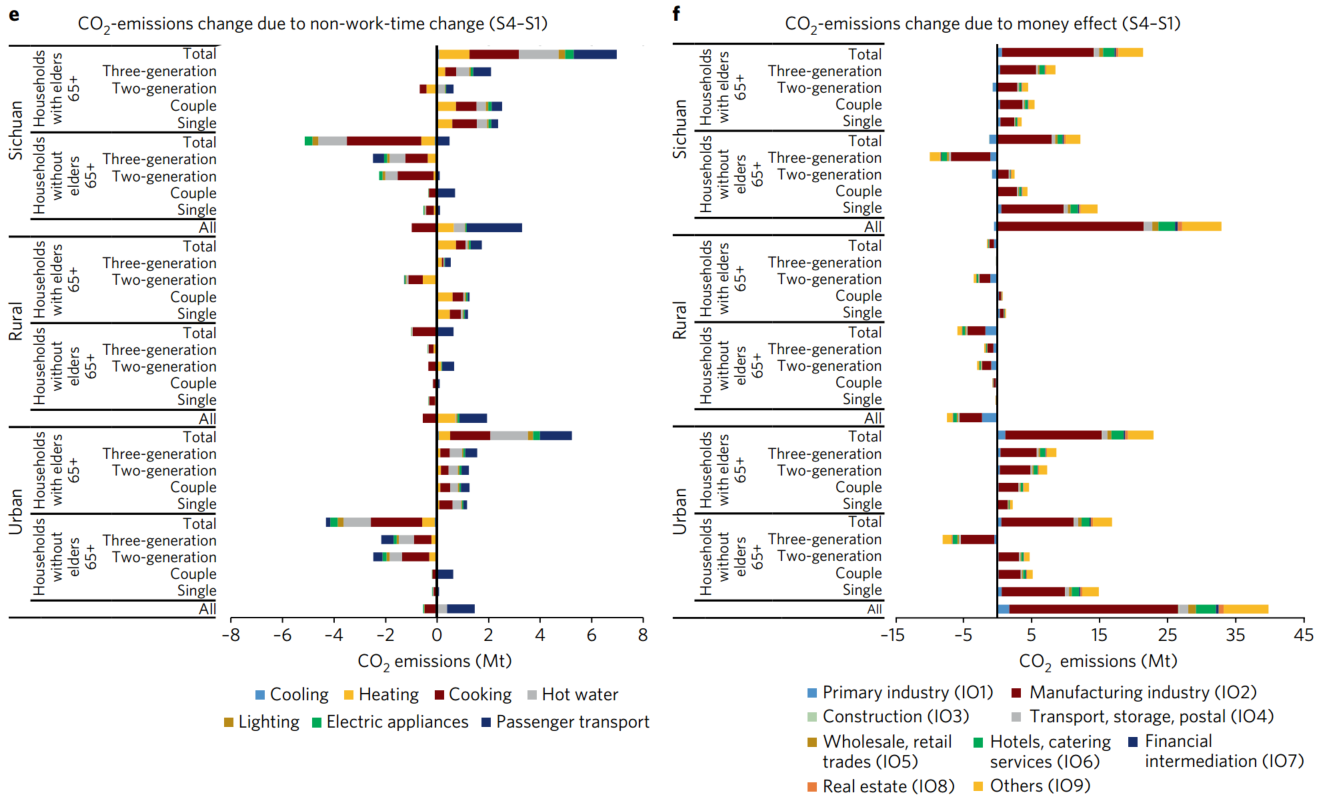Future scenarios for energy consumption and carbon emissions due to demographic transitions in Chinese households, fruit of Integrated Assessment Modeling on Economic Effects of Climate Change, a national key R&D project (2016YFA0602600), was recently published in "Nature-Energy". The first author of the paper is Yu Biying, associate professor in Energy and Environmental Policy Research Center. It takes a total of 22 months from submission to the final acceptance of the paper.
For half a century, the population, age structure, and level of urbanization have undergone tremendous changes on a global scale. The demographic transition has become an important factor in predicting future energy demand and emissions. Due to significant distinctions in employment, living and consumption patterns among different groups, changes in demographic structure have substantially altered working hours, leisure time, the demand for goods and services and the consumption structure, thereby greatly increasing uncertainty of forecasting for social energy demand. As a result, the demographic transition will affect people's energy and environmental systems by changing people's patterns of time use and consumption patterns. Based on the coupling mechanism of population-economy-energy-environment system, this study constructs a new scenario of energy consumption and carbon emissions caused by population structure transformation from the perspective of time use and consumption patterns.
Existing research mainly study the impact of demographic transition on energy and emissions from the perspective of changing the commodities and services people purcahse, while neglecting the role of another important factor, "time". In addition, current research generally adopts the "representative household / individual" mode in describing changes in demographic structure, assuming that all individuals and families in the whole society follow the same mode of production and consumption. Therefore, traditional thoughts ignore the intrinsic evolution of social time and capital investment caused by population structure changes, and largely restrains the common yet differentiated policy design. In view of the increasingly prominent aging and family miniaturization in China, an improved Extended Snapshot is constructed to couple the changes in population structure, the time-use patterns and consumption patterns within and among groups, and the economic development, technological progress, environmental impact and other dimensions. Using China's only large-scale survey data of time-use to tap into the heterogeneity of life patterns within and among household groups, this paper designs future scenarios of demographic composition, time utilization and consumption patterns and study the essential reasons and main sources of energy demand and carbon emissions generated by demographic transitions.
Results show that for China's underdeveloped provinces such as Sichuan, population aging and family miniaturization will increase the carbon emissions of the whole society, and more severely for other coal-dominated underdeveloped provinces. Energy consumption and carbon emissions are significantly underestimated irrespective of changes in population structure and accompanying lifestyles, with changes in consumption patterns due to demographic reasons accounting for 7.2%, working time change for 86.1% and non-working time change for 6.7%. The undervalued carbon emissions come mainly from growing demand for heating, cooking, hot water and transportation services from aging households and small-scale households, as well as increasing demand for products and services from other services such as manufacturing, accommodation and catering, and healthcare, education, culture, entertainment. In addition, compared with the base year, changes in working hours and non-working hours due to the demographic transition will increase 97 Mt carbon emissions, accounting for 12% of the total. Results quantitatively verify the impact of changes in population structure on energy consumption and carbon emissions, and provide a new perspective for further environmental analysis from a time-use perspective.


This paper constitutes the scientific basis for policy design to extend from the macro level to micro-level focusing on certain groups and sectors. It can be used to assess the effects of economy, technique and demographic policies on climate change mitigation and adaptation, help design policies addressing growing carbon emissions resulting from the demographic transition, and evaluate policies and products for energy saving and emission reduction.
Links:
https://www.nature.com/articles/s41560-017-0053-4
Biying Yu, Yi-Ming Wei, Gomi Kei, Yuzuru Matsuoka. Future scenarios for energy consumption and carbon emissions due to demographic transitions in Chinese households. Nature Energy. 2018. DOI: 10.1038/s41560-017-0053-4